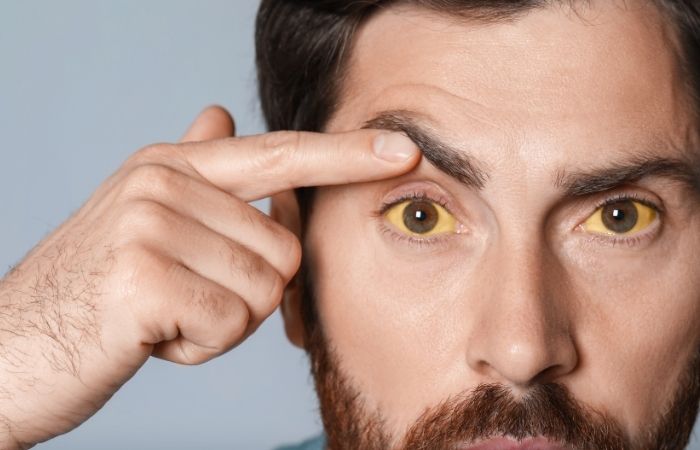Can You Really Catch an STD from a Towel?
What Are Zoonotic Sexually Transmitted Diseases?
A zoonotic disease is a disease that can infect humans and other animals. Some human sexually transmitted parasitic and bacterial infections are zoonotic, but the vast majority of sexually transmitted diseases are species-specific.

Non-Transmissible STDs
Chlamydia, gonorrhea, syphilis, herpes, HIV, HPV, and trichomoniasis are some of the most well-known human sexually transmitted diseases (STDs), although they are not zoonotic. As they cannot survive in other animals, these diseases have become capable of being transmitted between humans only.
On the other hand, STDs are not the only infectious diseases that can hop from species to species since there are infections that can hop from animals to humans as well.
Zoonotic Infectious Agents
Brucellosis
The Brucella bacterium causes this infection, which can be passed on from animals to humans through sexual intercourse or through mucous membranes or open wounds that can be used to transmit bodily fluids.
Humans can be impacted if they become closely exposed to ill dogs, although canine brucellosis is normally encountered in breeding dogs.
Reproductive issues, fever, arthralgia, and night sweats are some of the signs.
Order Now $129.00 $343.00 Check Your STD Status in Minutes
Test at Home with Remedium
7-in-1 STD Test Kit




For all 7 tests
Mycoplasma Infections
While certain species of Mycoplasma are transmitted from human to human by sexual contact (Mycoplasma genitalium), animals will also carry related species.
The medical literature has tried out the idea of cross-species transmission, but it is quite uncommon.
Leptospirosis
Not only canines and rodents but human beings too fall victim to this bacterial infection.
Although it is not a sexually transmitted disease in humans, it can be transmitted to animals through infected water, mucous membranes, or urine.
Fever, sore muscles, jaundice, and kidney and liver issues are all signs.

Salmonella and Campylobacter
Bacterial infectious diseases transmitted by contaminated saliva, feces, or other bodily fluids.
Although most cases are food poisoning, some strains have been found in canines and humans, in some instances caused by close contact.
Trichomoniasis
Trichomonas foetus is distinct from the human sexually transmitted disease, Trichomonas vaginalis; the former infects cats and the latter affects cattle reproduction.
Though there has been no reported case of direct feline-to-human transmission, studies have shown that it is precisely the same as in human strains.
Order Now $149.00 $392.00 Check Your STD Status in Minutes
Test at Home with Remedium
8-in-1 STD Test Kit




For all 8 tests
Case Studies: Is It Possible for People to Get Sexually Transmitted Diseases from Animals?
There is no visible evidence of direct transmission of sexually transmitted diseases (STDs) from humans to animals, but there are cases of disease transmission between species.
Veterinary Personnel Infected with Canine Brucellosis
After contact with infected canines in 2019, an Iowa veterinarian tested Brucella canis positive. Although the vet was not infected by sexual contact, he had been in contact with body fluids of breeding dogs. What we have here is an instance of transmission based on close contact of a zoonotic disease from animal to animal.
Leptospirosis in People Who Have Pets
Close exposure to infected rodents or dogs has been linked to a number of cases of transmission of leptospirosis. Leptospirosis was contracted by a New York dog owner in one instance because she always cleaned up after her dog when it urinated.
Zoo Keeper Contracts an Infection Comparable to Bacterial Vaginosis
One of the zookeepers acquired a bacterial vaginal infection working with exotic animals, according to a 2008 PubMed article. An environmental contact accidental transmission is raising concerns because the bacterium is one that is typically found in non-human primates.

Risks of Intentional and Accidental Transmission
A zoonotic infection involving a sexually transmitted disease has two potential modes of transmission:
Physical Contact by Accident
People with pets risk getting many parasite and bacterial infections by direct contact with body fluids.
One risks getting zoonotic bacteria more if one comes in contact with raw pet foods or cleans up after a pet.
Zoo employees, breeders, and veterinarians, by being exposed to animals' reproductive tracts continuously, risk getting the disease.
Sexually-Transmitted Infectious Agents
Bestiality has been recognized as a risk factor for zoonotic disease, but the problem is contentious.
People with a history of animal sex are at increased risk for bacterial STIs, such as trichomoniasis and Mycoplasma infections, the study states.
Case reports in people with atypical infections associated with animal contact have been documented by the New York Department of Health.
Under such circumstances, the diseases most commonly reported have been Brucella and leptospirosis.
Check Your STD Status in Minutes
Test at Home with Remedium10-in-1 STD Test Kit

 For Women
For Women Results in Minutes
Results in Minutes No Lab Needed
No Lab Needed Private & Discreet
Private & DiscreetOrder Now $189.00 $490.00
For all 10 tests
Prevention of Human-Animal Infection
There are certain zoonotic diseases whose transmission modes have been compared with human STDs, though the animals cannot transmit most of the STDs. Reduce danger:
Keep Your Hands Clean: Wash your hands as soon as possible after touching pets, especially after cleaning their feces.
Stay Away from Sick Animals: It's best to consult with a veterinarian first before touching a sick pet.
Wear Protective Equipment: When working with animal fluids, veterinary professionals and breeders must always use gloves as part of protective equipment.
Avoid Indicent Acts with Animals: Involvement in risky behavior puts individuals at the risk of such harmful bacterial disease.
Get Tested Frequently: Make it a point to get tested for sexually transmitted disease regularly.
There is also a discreet and reliable way of checking your status using at-home STD test kits in case there is any reason to suspect a possible infection. Get the confidence you need and safeguard your health by buying an in-home STD test kit today.
FAQs
1.- Does the same chlamydia infect humans and animals?
No, Chlamydia felis in cats and Chlamydia trachomatis in humans are wholly different.
2.- What sexually transmitted diseases do animals and human beings have?
Brucellosis, leptospirosis, and mycoplasma infections may be transmitted to animals potentially.
3.- Can animals be a source of HIV?
Yes, there are viruses that are similar in animals, but HIV is unique to human beings.
4.- Which zoonotic pet infection is most prevalent?
Brucellosis and leptospirosis transmission are prevalent.
5.- Can pets be infected with sexually transmitted diseases (STDs)?
Actually, the vast majority of sexually transmitted diseases are exclusive to certain species.
6.- Is it possible for non-human primate saliva to spread sexually transmitted diseases?
A few germs can be transmitted via saliva, but not the usual sexually transmitted diseases.
7.- Is gonorrhea transmitted by cats?
No, gonorrhea is a human-only disease.
8.- Can animals potentially transmit syphilis?
Syphilis only affects humans.
9.- How do I know if I have an infection?
Talk to your doctor before taking an at-home STD test.
10.- Do illnesses caused by bestiality really exist?
Yes, there is an increased risk of infection, studies determined.
Practice Safe & Consensual Sex and Get Tested!
While most STDs are not zoonotic, some infections can cross species barriers. If you suspect any infection, take an at-home STD test today for your peace of mind. To put your mind at ease, take an at-home STD test immediately if you're feeling any symptoms.
Sources
1.- Understanding Animal Research
2.- Bionity
3.- Cornell Feline Health Center
5.- PubMed Central - Kurthia gibsonii as a Sexually Transmitted Zoonosis










